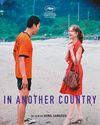Cut marks on bone fossils found on an Indian foothill could well change the narrative on human evolution.

Masol, an inconspicuous village tucked away in the lower reaches of the Shivaliks in Punjab with a smattering of vegetation, has raised a question fundamental to our existence: where and when did the first member of our species walk on this earth? Is it possible that ‘modern humans’emerged first in Asia, or more precisely, what is presentday India, and not Africa, as is widely believed across the world? And that, too, halfamillion years before the point where the evolutionary timeline is said to have ticked off going by the fossilised evidence in Africa?
Yes, palaeoanthropology might have just run into a watershed moment at Masol. In a discipline rife with claims and counterclaims, where it isn’t always easy to separate scientific findings from their interpretations coloured by concerns nonscientific, the discoveries at this village near Chandigarh are bound to lead to furious debate. They may well hold the key to some startling possibilities, shake up conventional wisdom on the timeline of our evolution, rewrite the human story and, maybe, even rattle the very foundations of anthropology.
Diese Geschichte stammt aus der March 28, 2016-Ausgabe von Outlook.
Starten Sie Ihre 7-tägige kostenlose Testversion von Magzter GOLD, um auf Tausende kuratierte Premium-Storys sowie über 8.000 Zeitschriften und Zeitungen zuzugreifen.
Bereits Abonnent ? Anmelden
Diese Geschichte stammt aus der March 28, 2016-Ausgabe von Outlook.
Starten Sie Ihre 7-tägige kostenlose Testversion von Magzter GOLD, um auf Tausende kuratierte Premium-Storys sowie über 8.000 Zeitschriften und Zeitungen zuzugreifen.
Bereits Abonnent? Anmelden

No Singular Self
Sudarshan Shetty's work questions the singularity of identity

Mass Killing
Genocide or not, stop the massacre of Palestinians

Passing on the Gavel
The higher judiciary must locate its own charter in the Constitution. There should not be any ambiguity

India Reads Korea
Books, comics and webtoons by Korean writers and creators-Indian enthusiasts welcome them all

The K-kraze
A chronology of how the Korean cultural wave(s) managed to sweep global audiences

Tapping Everyday Intimacies
Korean filmmaker Hong Sang-soo departs from his outsized national cinema with low-budget, chatty dramedies

Tooth and Nail
The influence of Korean cinema on Bollywood aesthetics isn't matched by engagement with its deeper themes as scene after scene of seemingly vacuous violence testify, shorn of their original context

Beyond Enemy Lines
The recent crop of films on North-South Korea relations reflects a deep-seated yearning for the reunification of Korea

Ramyeon Mogole?
How the Korean aesthetic took over the Indian market and mindspace

Old Ties, Modern Dreams
K-culture in Tamil Nadu is a very serious pursuit for many